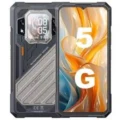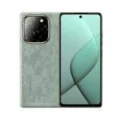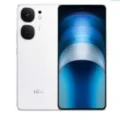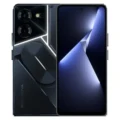Xiaomi Mi Pad 4






-
: 3/4GB RAM Snapdragon 660
-
: 8.0" 1200x1920 pixels
-
: 6000mAh 10W
-
: 13MP 1080p
The Xiaomi Mi Pad 4 is a mid-range tablet that offers a great balance of features and affordability. It’s a perfect choice for users who are looking for a device for everyday tasks like browsing the web, watching videos, reading ebooks, and playing casual games.
Immersive Display: The Mi Pad 4 boasts a 10.1-inch IPS display with a 1200 x 1920 resolution. This delivers crisp visuals and vivid colors, making it enjoyable for watching movies, reading, or gaming.
Long-lasting Performance: Powered by the Snapdragon 660 processor and paired with 4GB of RAM, the Mi Pad 4 provides smooth performance for everyday tasks. Whether you’re browsing social media, checking emails, or streaming videos, the Mi Pad 4 can handle it with ease.
Capture Those Moments: The Mi Pad 4 features a 13MP rear camera that lets you capture photos and videos on the go. While not the most high-tech camera on the market, it’s sufficient for casual use. The front-facing camera is perfect for video calls or selfies.
All-Day Battery Life: The Mi Pad 4 packs a massive 8620mAh battery, offering impressive longevity on a single charge. This means you can use your tablet throughout the day without worrying about running out of power.
Lightweight Design: With a sleek metal build and weighing in at just over 300 grams, the Mi Pad 4 is comfortable to hold and easy to carry around.
The Xiaomi Mi Pad 4 is a great choice for anyone looking for an affordable and versatile tablet for entertainment, productivity, and everyday use.
Here are some additional points to consider:
- The Mi Pad 4 runs on MIUI, a custom user interface based on Android.
- It may not be the most powerful tablet on the market, but it offers great value for its price.
- With its launch in 2018, it may not have the latest software or hardware compared to newer models.
Overall, the Xiaomi Mi Pad 4 is a solid mid-range tablet that is perfect for everyday use.
You can views all products of Xiaomi. also visit it official site.
Specs
Network
| 4G Network |
1, 3, 5, 7, 8, 34, 38, 39, 40, 41 |
| Speed |
LTE (3CA) Cat12 600/150 Mbps |
LAUNCH
| Announced | June, 2025 |
| Status |
Available. Released 2018, June |
BODY
| Dimensions | 200.2 x 120.3 x 7.9 mm (7.88 x 4.74 x 0.31 in) |
| Weight | 342.5 g (12.10 oz) |
| Build | Glass front, aluminum back, aluminum frame |
| SIMs SIM (Subscriber Identity Module) is a small card that contains mobile network subscriber's account information. This allows the phone using the card to attach to a mobile network. The SIM card is most commonly associated with GSM and UMTS mobile networks. Moving a SIM card from one phone to another allows a subscriber to switch mobile phones without having to contact their mobile network carrier. SIM cards can also be used by a phone to store limited amounts of data, such as phone numbers and text messages. |
Nano-SIM |
Display
| Display Type Display Technology => A number of display technologies and types used in mobile phones => TFT (Thin Film Transistor), IPS (In-Place Switching), OLED (Organic Light Emitting Diode), AMOLED (Active-Matrix Organic Light-Emitting Diode), Super AMOLED (an even advanced version of AMOLED), Resistive Touchscreen (Resistive touchscreens contain two layer of conductive material with a very small gap between them which acts as a resistance), Capacitive Touchsceen (Capacitive touchscreen technology consists of a layer of glass coated with a transparent conductor) | IPS LCD |
| Size | 8.0 inches, 185.6 cm2 (~77.1% screen-to-body ratio) |
| Resolution | 1200 x 1920 pixels, 16:10 ratio (~283 ppi density) |
PLATFORM
| Operating System OS => Every computer system run on a base software called Operating System (OS). Operating System controls all basic operations of the computer (such as smartphone, PDAs, tablet computers and other handheld devices). The Operating System allows the user to install and run third party applications (apps), apps are used to add new functionality to the device. | Android 8.1 (Oreo), MIUI 9 |
| Chipset Chipset is a group of integrated circuits designed to perform one or a more dedicated functions, often with real time computing constraints, Popular smartphones are equipped with more advanced embedded chipsets that can do many different tasks depending on their programming. | Qualcomm SDM660 Snapdragon 660 (14 nm) |
| CPU CPU (Central Processing Unit) mostly known as processors, CPU processes instructions in order to carry out certain functions that make your device operate properly. Processors are often described as the brain of computers, smartphones and tablets, Smartphones and tablets rely on processors to carry out their every task, Processors are an incredibly important factor in selecting any type of computing device, including your smartphone. | Octa-core (4x2.2 GHz Kryo 260 Gold & 4x1.8 GHz Kryo 260 Silver) |
| GPU GPU (Graphics Processing Unit) is a single-chip processor designed to rapidly manipulate and alter memory to accelerate the creation of images in a frame buffer intended for output to a display, This includes things such as lighting effects, object transformations, and 3D motion. | Adreno 512 |
MEMORY
| Card Slot Memory Card Slot is a special slot for inserting a memory card. Memory cards allow you to expand the phone's built-in memory, A memory card (sometimes called a flash memory card or a storage card) is a small storage medium used to store data such as text, pictures, audio, and video, for use on small, portable or remote computing devices such as mobile phones, mp3 players, digital cameras. | microSDXC (dedicated slot) |
| Internal | 32GB 3GB RAM, 64GB 4GB RAM eMMC 5.1 |
MAIN CAMERA
| Cameras Specs Today’s smartphones come equipped with a very comprehensive set of camera related specifications. Our smartphone, for many of us, has become our primary camera due to it being the one we always have with us. |
13 MP, f/2.0 |
| Video | 1080p@30fps |
| Camera Features |
Panorama, HDR |
SELFIE CAMERA
| Cameras Specs Today’s smartphones come equipped with a very comprehensive set of camera related specifications. Our smartphone, for many of us, has become our primary camera due to it being the one we always have with us. |
5 MP, f/2.0 |
SOUND
| Loudspeaker | Yes, with stereo speakers |
| 3.5mm jack |
Yes |
COMMS
| WLAN |
Wi-Fi 802.11 a/b/g/n/ac, dual-band, Wi-Fi Direct |
| Positioning |
GPS, GLONASS, BDS (LTE model only) |
| Bluetooth Bluetooth is a wireless communications technology for exchanging data between mobile phones, headsets, computers and other network devices over short distances without wires, Bluetooth technology was primarily designed to support simple wireless networking of personal consumer devices. | 5.0, A2DP, LE |
| Infrared Infrared connectivity is an old wireless technology used to connect two electronic devices. It uses a beam of infrared light to transmit information and so requires direct line of sight and operates only at close range. | |
| USB | USB Type-C |
| NFC NFC (Near field communication) is a set of standards for smartphones and similar devices to establish peer-to-peer radio communications with each other by touching them together or bringing them into proximity, usually no more than a few inches. | |
| Radio |
Features
| Sensors Sensors are electronic components that detects and responds to some type of input from the physical environment. The specific input could be light, heat, motion, moisture, pressure and location, The output is generally a signal that is converted to use in computing systems, a location sensor, such as a GPS receiver is able to detect current location of your electronic device. |
Accelerometer, gyro, proximity, compass (LTE model only) |
BATTERY
| Battery Type Battery Type => Cell phones run on various kinds of batteries depending on the manufacturer, phone size or shape and features. There are basically four types of cell phone batteries => Lithium Polymer, Lithium Ion, Nickel Metal Hydride and Nickel Cadmium. | Li-Poly (Lithium Polymer) |
| Capacity Battery Capacity is a measure (typically in Amp-hr) of the charge stored by the battery, and is determined by the mass of active material contained in the battery. The battery capacity represents the maximum amount of energy that can be extracted from the battery under certain conditions. | 6000 mAh |
| Placement | non-removable |
| Charging The functionality responsible for recharging batteries in portable devices, such as mobile phones, significantly influences both battery lifespan and the practicality of daily product usage. The charging process, encompassing factors like voltage, current, and completion actions, is contingent upon the battery's size and type. Contemporary battery chargers dynamically adjust charging parameters based on the battery's current charging state. Charging an empty battery poses no safety risk, allowing for a quicker charging process. Consequently, many charging speed benchmarks, including ours, specify the battery level achieved after a 30-minute session on an empty battery. Standard chargers with a power output of 5V/1A, equivalent to 5W, serve as a baseline, with anything surpassing this speed classified as quick or fast charging. | 10W wired |
MISC
| Colors |
Black, Rose Gold |
| Price |
About 160 EUR |
TESTS
Reviews
Disclaimer Note
We strive to maintain accurate and up-to-date content on our website for general information purposes only. Please refrain from using the material for business, legal, or any other decisions.



















